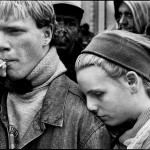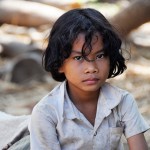Intentional Orphans
 Writers often create from childhood experience. Deep, vivid memories, often recalled again and again as we age. They serve as an underlay and comparison to our current lives.
Writers often create from childhood experience. Deep, vivid memories, often recalled again and again as we age. They serve as an underlay and comparison to our current lives.
My first post called “An Orphan Story” is a first grade memory. In third grade our teacher read the class The Boxcar Children and the fictional world of orphans opened. The compelling book revealed how kids could make do without adults, how they became a strong unit and took care of each other. They were free to take risks and embark on adventures that wouldn’t be allowed by sheltering parents. The story made me feel powerful, even though there were no empty boxcars, creeks or dumps with handy household items near my house.
What’s the draw?
Some of our best literature is centered on orphans. Why is that? They draw our attention and sympathy. The reader feels scared when they’re in danger and roots for their successes.
Well-known literary examples are Superman, Spiderman, Tarzan, and Frodo Baggins. Dickens gave us Oliver Twist and David Copperfield. Patrick Rothfuss gave us Kvothe in The Name of the Wind and The Wise Man’s Fear. John Irving gave us The Cider House Rules, and J. K. Rowling, Harry Potter.
But do resourcefulness and courage work in the non-fictional world? Survival is the struggle to keep living, during war and other harsh conditions. How do orphans of war, famine and dystopias survive physically? What about traumatized children and teens who run away, turning themselves into orphans?
Questions with complex answers that depend on external factors such as the country’s stability, the socioeconomic class, even the climate and time of year children and teens run away.
When the economy is bad, the number of runaways increase, for example, between 2005-2008 the National Runaway Switchboard in the US saw a 200% increase in calls. Runaways report their reasons for leaving home or foster care: physical abuse 48%, emotional abuse 38% and 17% have had unwanted sexual advances from various family members. While they live in pain and fear, they often end up in worse circumstances once they run away.

What could we learn from fiction about physical survival? Our fictional girls and boys are young with physical stamina, they often have a way with words and are able to persuade other adults to help them. They’re smart risk-takers, they sleep on the roofs of buildings, secret themselves in mountain caves and big city sewers. Their environments are often degraded to raise the book’s tension, the governments are usually harsh and unforgiving, yet our heroes keep flattering and scheming to improve their situation.


But the outcome for runaway boys and girls in the US isn’t good.

As of 2010 the numbers of homeless and runaway youths have risen to 1.6 million in the US. They live in abandoned buildings, under bridges, with strangers or friends. They’re at high risk for physical and sexual abuse, substance abuse, mental health issues and death; the death rate in the US is estimated at 5,000 minors a year. They die from assault, illness and suicide. They die from infected wounds, untreated asthma and other chronic illnesses, drug and alcohol overdoses, malnutrition, and hypothermia. Perhaps orphans in fiction are so compelling because readers want to believe the fate of fictional orphans could be possible in our world.